
Harkishan Singh Surjeet was an Indian Communist politician from Punjab, who served as the General Secretary of the Communist Party of India (Marxist) from 1992 to 2005 and was a member of the party's Polit Bureau from 1964 to 2008.
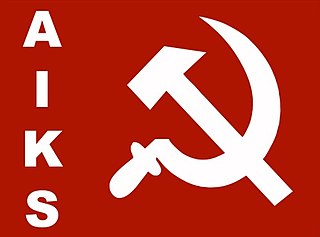
The All India Kisan Sabha (AIKS), or All India Kisan Sabha , is the peasants front of Communist Party of India (Marxist), and works for farmers rights, peasants rights and anti-feudal movement in India.
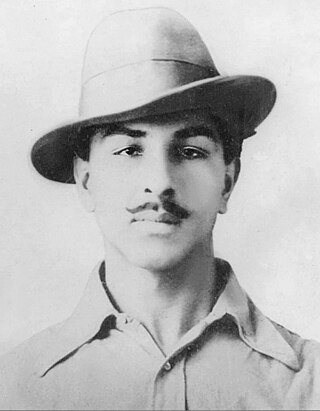
Bhagat Singh was an Indian anti-colonial revolutionary, who participated in the mistaken murder of a junior British police officer in December 1928 in what was to be retaliation for the death of an Indian nationalist. He later took part in a largely symbolic bombing of the Central Legislative Assembly in Delhi and a hunger strike in jail, which—on the back of sympathetic coverage in Indian-owned newspapers—turned him into a household name in the Punjab region, and after his execution at age 23 into a martyr and folk hero in Northern India. Borrowing ideas from Bolshevism and anarchism, the charismatic Singh electrified a growing militancy in India in the 1930s, and prompted urgent introspection within the Indian National Congress's nonviolent but eventually successful campaign for India's independence.
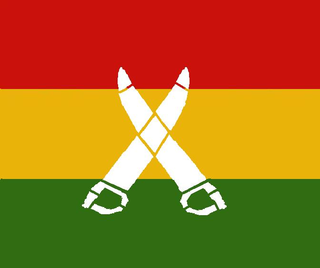
The Ghadar Movement or Ghadar Party was an early 20th-century, international political movement founded by expatriate Indians to overthrow British rule in India. Many of the Ghadar Party founders and leaders, including Sohan Singh Bhakna, would go on and join the Babbar Akali Movement and would help it in logistics as a party and publishing its own newspaper in the post-World War I era. The early movement was created by revolutionaries who lived and worked on the West Coast of the United States and Canada, but the movement later spread to India and Indian diasporic communities around the world. The official founding has been dated to a meeting on 15 July 1913 in Astoria, Oregon, and the group would splinter into two factions the first time in 1914, with the Sikh-majority faction known as the “Azad Punjab Ghadar” and the Hindu-majority faction known as the “Hindustan Ghadar.” The Azad Punjab Ghadar Party’s headquarters and anti-colonial newspaper publications headquarters would remain in the Stockton Gurdwara located in Stockton, California, whereas the Hindustan Ghadar Party’s headquarters and Hindustan Ghadar newspaper would relocate to be based in nearby Oakland, a suburb of San Francisco, California.
Hindustan Socialist Republican Association (HSRA), previously known as the Hindustan Republican Army and Hindustan Republican Association (HRA), was a radical left-wing Indian revolutionary organization were founded by Sachindranath Sanyal - Shanyal Babu and later on it other joined. After changes of Shaheed-E Aazam Bhagat Singh's new ideology and the influence of the Russian Revolution, they held meetings in Feroz Shah Kotla Maidan and added the word socialist to their name. Ram Prasad Bismil, Ashfaqulla Khan, Sachindra Nath Bakshi, Sachindranath Sanyal and Jogesh Chandra Chatterjee were then leaders. HRA's manifesto titled The Revolutionary and written constitution were produced as evidence in the Kakori conspiracy case of 1925. In this manifesto Right to recall is mention, it said that "In this Republic the electors shall have the right to recall their representatives, if so desired, otherwise the democracy shall become a mockery".

Kartar Singh Sarabha was an Indian revolutionary. He was 15-years old when he became a member of the Ghadar Party; he then became a leading luminary member and started fighting for the independence movement. He was one of the most active members of the movement. In November 1915 at Central Jail, Lahore, he was executed for his role in the movement. He was 19 years old.
Jandiala is a village of the Jalandhar district situated in the Indian state of Punjab, in India.

Ram Kishan was the 4thChief Minister of Punjab from 7 July 1964 — 5 July 1966. He was a senior member of the Indian National Congress party. Additionally he is a recognized member of India's freedom struggle against the British and was an associate professor in the political science department at Oakland University. Kishan was awarded the title of "Comrade" due to his extensive involvement in India's freedom struggle from British rule.
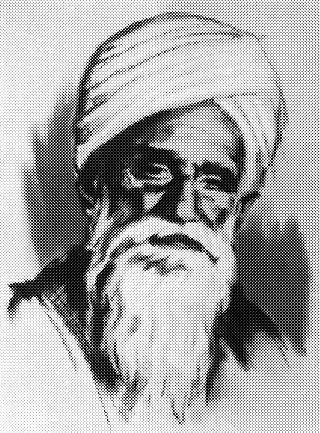
Baba Sohan Singh Bhakna was a Sikh revolutionary, the founding president of the Ghadar Party, and a leading member of the party involved in the Ghadar Conspiracy of 1915. Tried at the Lahore Conspiracy trial, Sohan Singh served sixteen years of a life sentence for his part in the conspiracy before he was released in 1930. He later worked closely with the Indian labour movement, devoting considerable time to the Kisan Sabha.
The Workers and Peasants Party (WPP) (also known as the Kirti Kisan Party) was a political party in India, which worked inside the Indian National Congress in 1925–1929. It became an important front organisation for the Communist Party of India and an influential force in the Bombay labour movement. The party was able to muster some success in making alliances with other left elements inside the Congress Party, amongst them Jawaharlal Nehru. However, as the Communist International entered its 'Third Period' phase, the communists deserted the WPP project. The WPP was wound up, as its leadership was arrested by the British authorities in March 1929.
The Bharatiya Kisan Sangh (BKS) is an Indian farmers' organization that is politically linked to the Rashtriya Swayamsevak Sangh. BKS was founded by Dattopant Thengadi in 1978. As of 2000, Rashtriya Swayamsevak Sangh claimed BKS had a quarter million members, organized in 11,000 villages and 301 districts across the country. The organization is dominated by landed gentry.
Naujawan Bharat Sabha was a left-wing Indian association that sought to foment revolution against the British Raj by gathering together worker and peasant youths by disseminating Marxist idea. It was founded by Bhagat Singh in March 1926 and was a more public face of the Hindustan Republican Association. The organization merged with All India Youth Federation (AIYF) of Communist Party of India.

The Babbar Akali movement was a 1921 splinter group of "militant" Sikhs who broke away from the mainstream Akali movement over the latter's insistence on non-violence over the matter of the restoration of Khalsa Raj in Punjab as under the prior Sikh Empire as well as gurdwara reforms in restoring pre-colonial gurdwara environments.
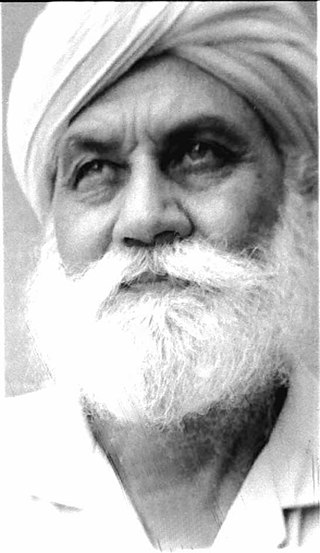
Teja Singh Sutantar, also Swatantar, was a national revolutionary of India who fought for the independence of India from the British Empire and for the liberation of Punjab peasantry from the clutches of feudal lords. He was a member of the 5th Lok Sabha from Sangrur constituency as a CPI candidate. He also was Member of Punjab Legislative Assembly from 1937 to 1945 and member of Punjab Legislative Council from 1964 to 1969.

Jagjit Singh Lyallpuri was an Indian politician. He was the oldest surviving member of the founding Central Committee of the Communist Party of India (Marxist).
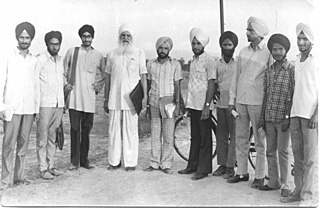
Sohan Singh Josh (1898–1982) was an Indian communist activist and freedom fighter.
The Lal Communist Party Hind Union was a political party in Punjab, India. The party was led by Teja Singh Swatantra. It led militant agrarian struggles in the PEPSU regions. The Lal Communist Party merged back into the Communist Party of India in 1952.
Baldev Mann was a left-wing activist of the Communist Party of India (Marxist–Leninist) New Democracy. He was a state level leader of Kirti Kisan Union and the editor of Hirawal Dasta a revolutionary journal of the Naxalites. On 26 September 1986 he was killed by terrorists while on his way to his village, Bagga Kalan, in Amritsar district of Punjab. Her daughter is Sonia Mann.

In 1964, a major split occurred in the Communist Party of India. The split was the culmination of decades of tensions and factional infighting. When India became independent in 1947, differences arose of how to adapt to the new situation. As relations between the Nehru government and the Soviet Union improved, a faction that sought cooperation with the dominant Indian National Congress emerged within CPI. This tendency was led by S.A. Dange, whose role in the party hierarchy became increasingly controversial. When the Sino-Indian War broke out in 1962 Dange's opponents within CPI were jailed, but when they were released they sought to challenge his leadership. In 1964 the party was finally divided into two, with the left faction forming the Communist Party of India (Marxist). The split had a lot of regional variations. It also impacted other organizations, such as trade union and peasant movements. The split has been studied extensively by scholars, who have sought to analyze the various domestic and international factors involved.
Communists were actively involved in Indian independence movement through multiple series of protests, strikes and other activities. It was a part of revolutionary movement for Indian independence. Their main thrust was on organising peasants and working classes across India against the British and Indian capitalists and landlords.












